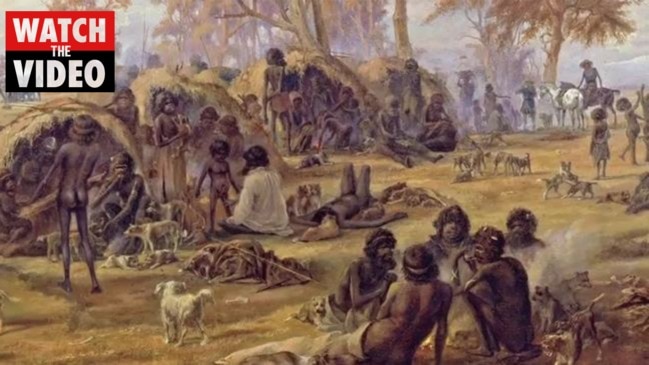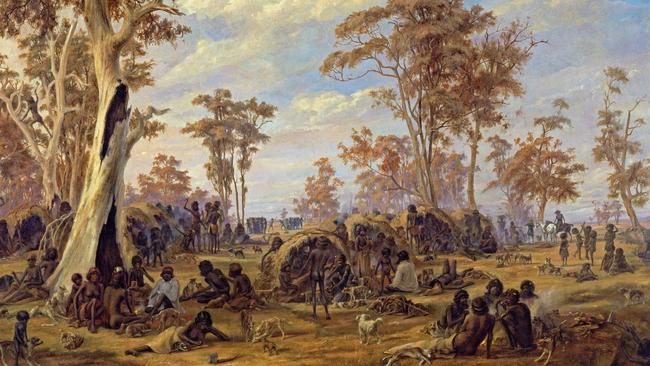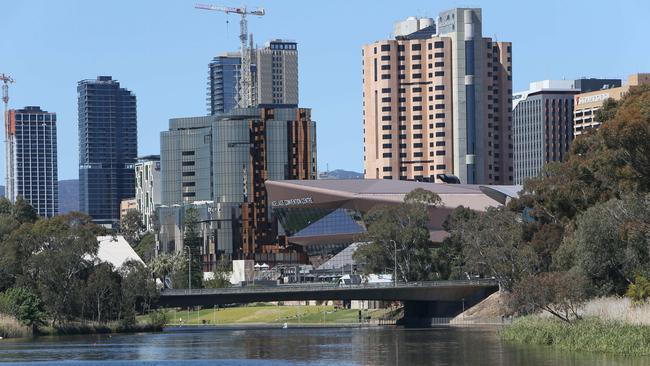Colin James: As official consultation continues over parklands zoning changes, it is important the Kaurna are heard
When it comes to building on Adelaide’s parklands, there’s a big group of people we must talk to, writes Colin James.

Opinion
Don't miss out on the headlines from Opinion. Followed categories will be added to My News.
One important aspect seems to have been overlooked so far in the debate over rezoning large parts of the Adelaide Parklands for development – their cultural significance to the Kaurna people.
Most of the public discussion so far has been centred on high-rise buildings near a proposed entertainment arena and a multistorey carpark next to a new Women’s and Children’s Hospital, on North Tce.
Little has been said about the importance to Adelaide’s original inhabitants of areas along the River Torrens such as Pinky Flat, where buildings up to two storeys high could be allowed for businesses including cafes, small bars, kiosks and tourism ventures.
All of which is a tad hypocritical, considering how every official meeting, arts festival or other large public event within Adelaide opens with the acknowledgment that they are taking place on the lands of the Kaurna people.
Take Adelaide City Council, for example. It begins each meeting with the statement they are being held on the “traditional country of the Kaurna people of the Adelaide Plains”.
“We recognise and respect their cultural heritage, beliefs and relationship with the land,” it continues. “We acknowledge that they are of continuing importance to the Kaurna people living today.”

Which should all create a bit of a predicament for the council and state government when it comes to making any decisions about putting permanent buildings on Pinky Flat if they are serious about reconciliation.
It is well documented that Pinky Flat was an important camping place for the Kaurna long before the arrival in South Australia of Governor John Hindmarsh, Colonel William Light and the hundreds of first free settlers aboard nine ships in 1836.
In fact, as a painting by artist Alexander Schramm shows, the Kaurna were still living there among giant red gums in 1850, a decade after an ailing Light finished the blueprint for Adelaide as the state’s capital beside the River Torrens, or Karrawirra Parri.
It was Light who created the parklands which still encase his “square mile” within an expansive green belt on lands known to the Kaurna as Tarnanyungga Kaurna Yeta, or Red Kangaroo Dreaming.

A powerful statement released by the Kaurna in 1998 encapsulated how they felt about the ongoing development of their spiritual lands, saying they had been “deprived of the responsibility of maintaining many crucial, culturally meaningful places”.
“The setting-up of the City of Adelaide and its park lands deprived our ancestors of the responsibility for maintaining crucial, culturally meaningful places,” it said.
“On the Park Lands the Kaurna have suffered to the present day as a result of this dispossession. Invasion has meant continuing alienation, oppression and harassment for us and other indigenous people.
“These injustices have been planted out on the Adelaide Park Lands.
“The Park Lands have many culturally significant places. These places should be preserved from further encroachment.
“We, as Kaurna people, must walk on these places to maintain our cultural strength.”

Last week, during a meeting with the senior officer overseeing the proposed zoning changes, I was given an assurance that consultation was taking place with the Kaurna.
Publicly, the PlanSA website says traditional owner groups “have been directly notified and invited to participate in the code amendment engagement process”.
The website also says that “the code amendment recognises the strong spiritual connection of traditional owners to the River Torrens and its environs”.
Whatever consultation is underway is being conducted privately because Pinky Flat is officially registered as a significant cultural site for the Kaurna.
As someone who spent many years covering the Hindmarsh Island saga in the 1990s, I have witnessed what can happen when traditional owners are not engaged, listened to and respected especially when it comes to sacred sites.
One can only hope the Kaurna are having their voices heard.



